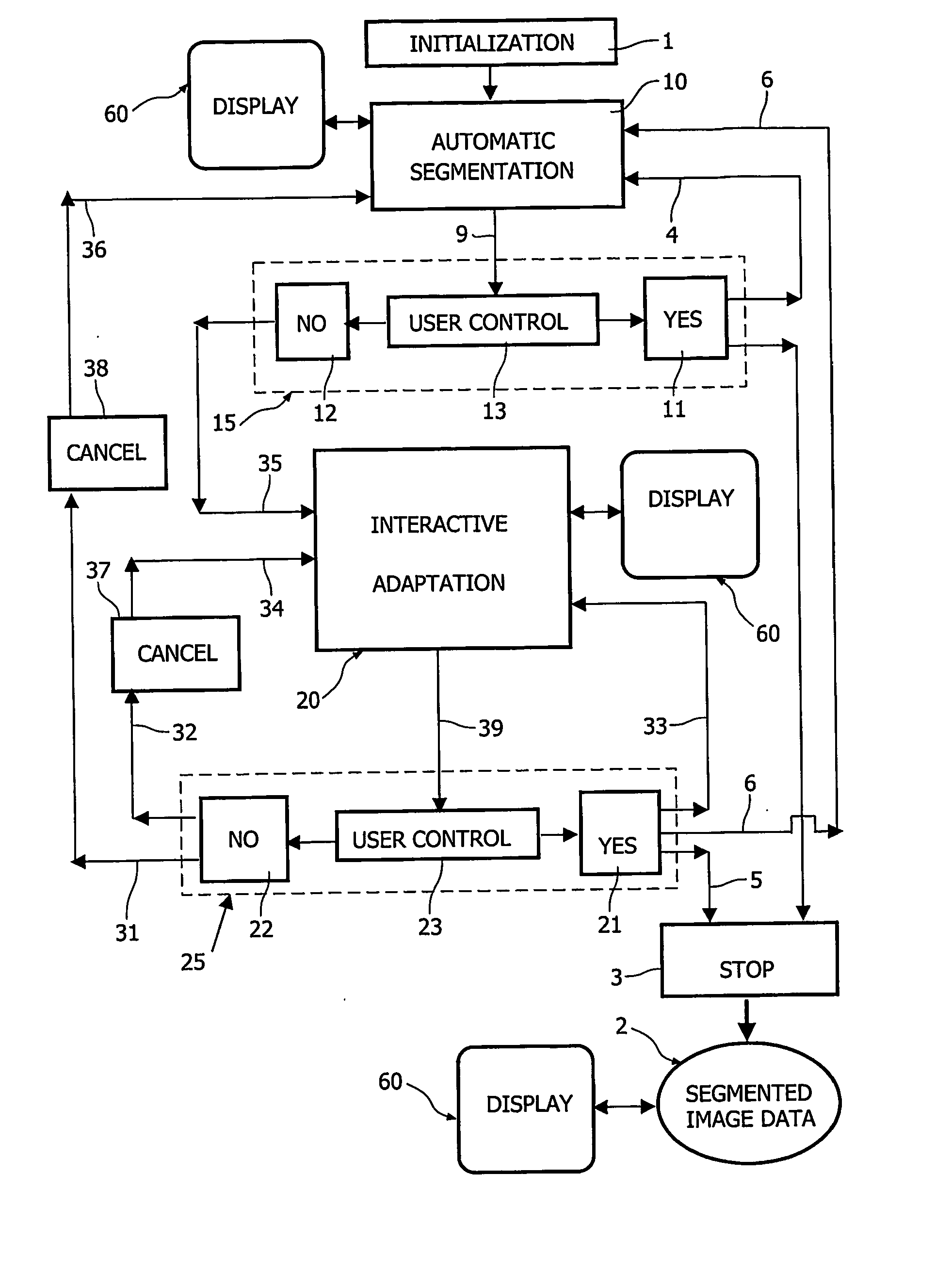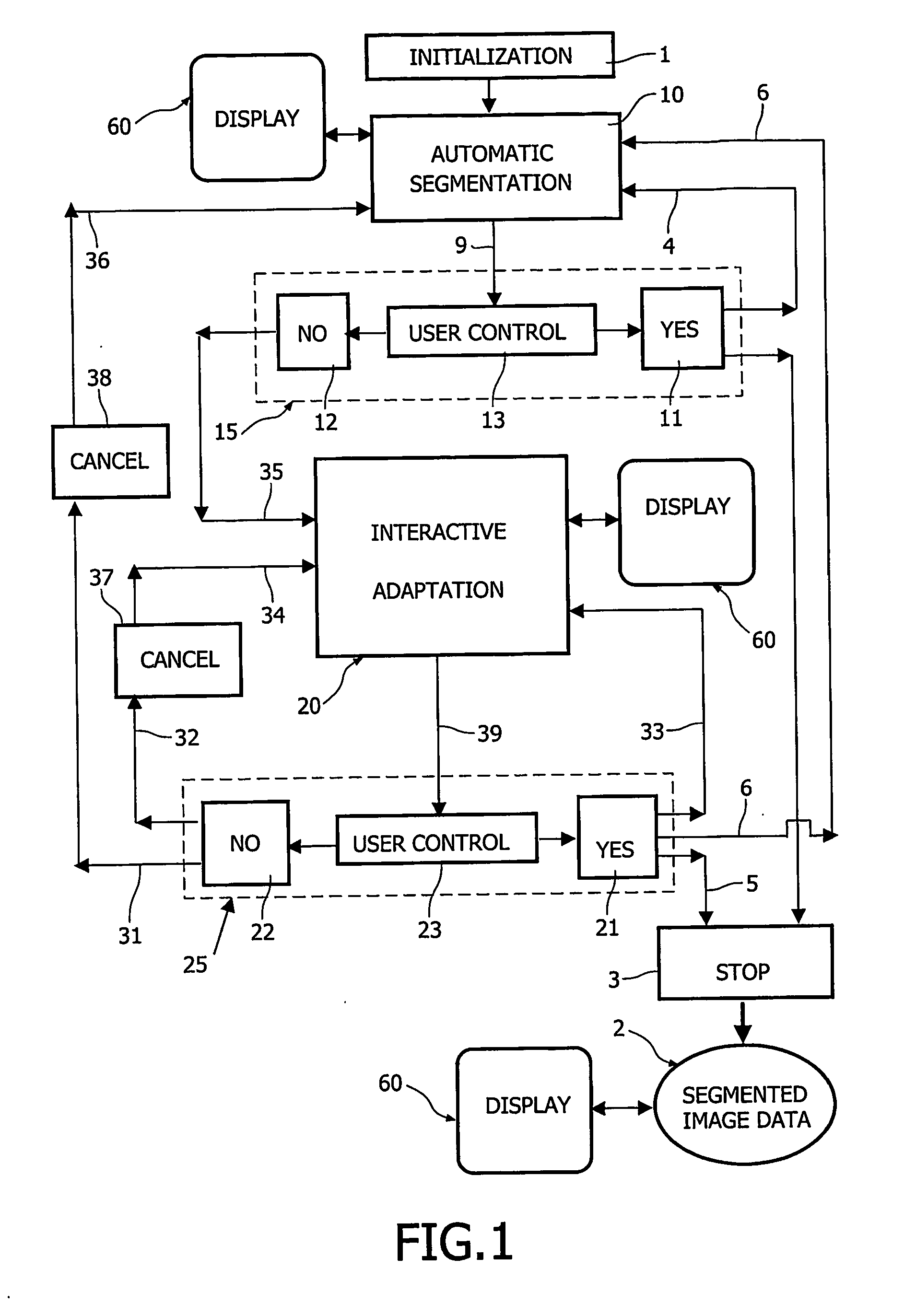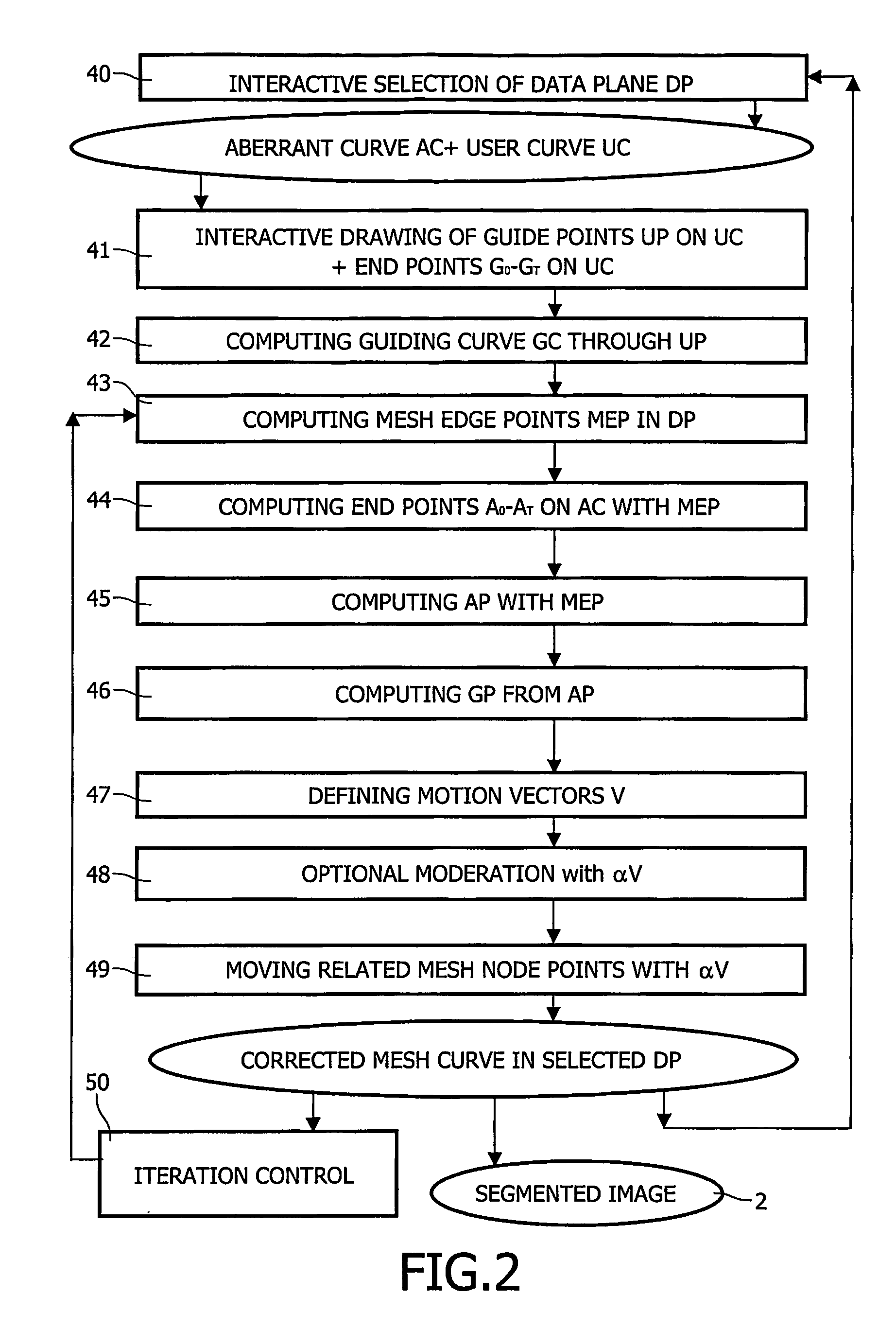Three-dimensional segmentation using deformable surfaces
a three-dimensional segmentation and deformation technology, applied in the field of image processing system, can solve the problem that the “simplex mesh” technique that is proposed in the cited paper may not achieve a perfect segmentation in certain circumstances, and achieve the effect of improving the fitness of the 3d surface model and being convenient for users
- Summary
- Abstract
- Description
- Claims
- Application Information
AI Technical Summary
Benefits of technology
Problems solved by technology
Method used
Image
Examples
Embodiment Construction
[0021] The invention relates to an image processing system for segmenting an object of interest represented in a three-dimensional image, using a Deformable Surface Model Technique, or a three-dimensional Deformable Mesh Model Technique, whereby the Surface Model or the Mesh Model of segmentation is fitted onto the surface of said three-dimensional object. The object of interest may be an organ represented in a three-dimensional medical image. In the example described below, the Surface Model is a Mesh Model.
[0022] Segmenting images using discrete deformable models, like 2-Simplex meshes, often requires corrections of the resulting segmented surface. This is especially true for medical images, where due to image noise or poor data quality some salient image features may be missing. As a result, some parts of the model might be attracted to wrong features leading to partially erroneous segmented shape. Therefore, the practitioner usually would like to use his / her experience in image...
PUM
 Login to View More
Login to View More Abstract
Description
Claims
Application Information
 Login to View More
Login to View More - R&D
- Intellectual Property
- Life Sciences
- Materials
- Tech Scout
- Unparalleled Data Quality
- Higher Quality Content
- 60% Fewer Hallucinations
Browse by: Latest US Patents, China's latest patents, Technical Efficacy Thesaurus, Application Domain, Technology Topic, Popular Technical Reports.
© 2025 PatSnap. All rights reserved.Legal|Privacy policy|Modern Slavery Act Transparency Statement|Sitemap|About US| Contact US: help@patsnap.com



